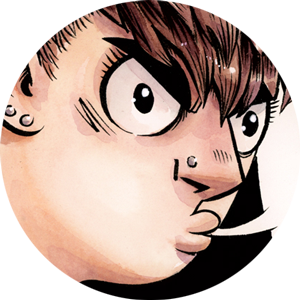In college a huge part of my technical focus throughout my sophomore year was oil paint. It was 2001 and the concept of doing highly detailed work on a computer was laughable to most professional illustrators. (At least, that was the case at the art school I attended).
But despite my earnest efforts, and the fact that I had a fairly good sense of color and all the principles of painting, I could never get my work into the realm of “finished” that I wanted. Whenever I attempted to improve my technique, I was met with vague critique about mark making that I didn’t really grasp, concepts of refinement that were never shared with me. A medium that I sorely loved was becoming something I couldn’t stand to work in, because it was never good enough to take me anywhere.
A day will come where I will post long and thoughtfully about art school, where it fails and assists young artists in their craft and development. But let’s put it this way for now: college discouraged me from painting in a professional, illustrative capacity for two decades.
Digital art has come along in spades in that time. It is often hard to tell what is and isn’t done on an iPad now. But even though I came to embrace the computer as an assembly and coloring tool, I’ve found that much of my enjoyment when it comes to making art is in physical media. Over the years I have kept a ridiculous amount of what I like to think of as “media practice” sketchbooks, where I was essentially finishing tiny illustrations and character studies in colored pencil or paint or ink.
Then, came ORCS! (There is another story to add here, regarding ORCS! and its long road to realization, but that is not this post. This post is about my first professional painting, done sixteen years after I graduated art school.)
When it was time to consider how I would be doing the covers for my first series as a creator, I really wanted to do something special. I had been dabbling with gouache and liquid acrylic in earnest since the lockdown started. With a fresh set of cheap liquid acrylic paints on hand, I figured I’d have a go at painting the thing.
This was not too insane of a thought. I have a little time to work on the cover itself, and I figured: if it didn’t pan out, I could always go about things in the usual way (with ink, maybe some graphite, and computer coloring).
It went better than I thought! Four years of cover art later (including variants for Miss Truesdale and Count Crowley along with a number of personal studies), I am finally at a point where I have real confidence in the medium and I am excited with regards to where I can take it.
It’s strange how years of making can wear on you in ways you don’t expect. A large part of what I like about making art is the technical nature of doing a thing, whether I am obsessing in the storytelling or the process. Sometimes you need to shake up the doing for your own mental health. It also helped me to reclaim my love of painting from art school, which discouraged me from pursuing that course in my work.
(And, while I consider the computer a useful and important tool in the kit, I look forward to the day I don’t have to worry if my Photoshop update will crash my computer.)
Here’s a collection of ORCS! Covers over the years, in chronological order. (Scanned and color corrected versions):





















